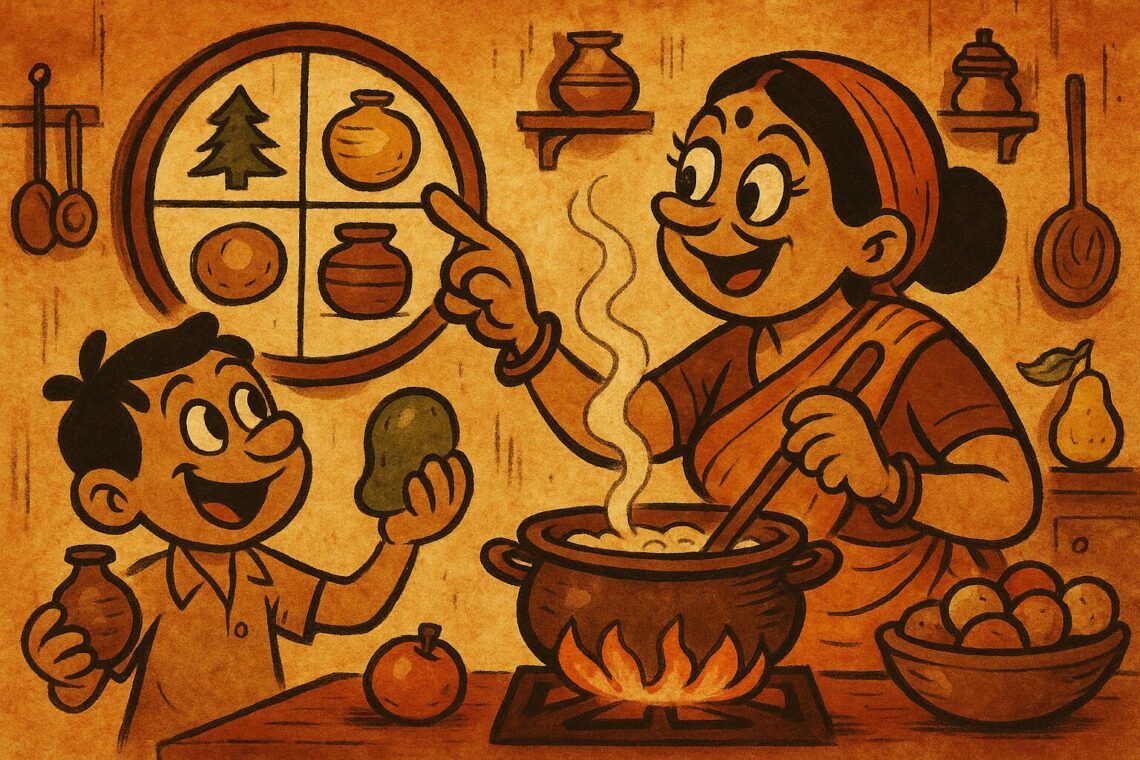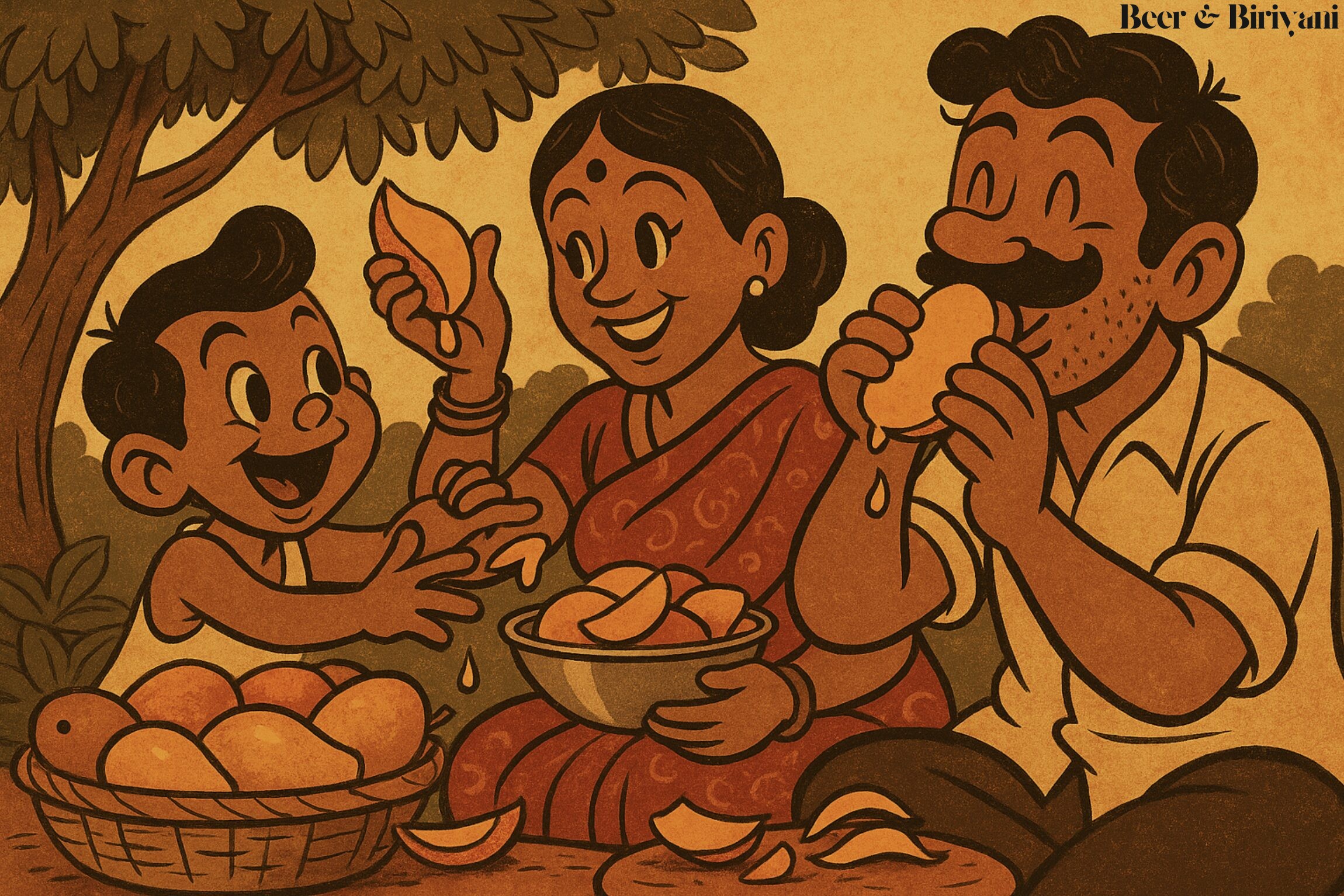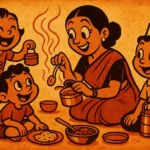Somewhere between my third turmeric latte in Austin and an article claiming “Ghee Is the New Coconut Oil,” I realized something: our grandmothers were doing seasonal eating before it became a hashtag. Back when “superfoods” weren’t branded, they were just what was in the sabzi bag from the market. Eating according to the weather wasn’t a wellness trend. It was just… lunch.
Growing up in Mumbai, I didn’t know there was a term for this. But I knew that ghee was poured with abandon in winter, mangoes showed up like VIP guests in May, and raw banana curry quietly disappeared once the monsoon set in. I thought it was just habit. It wasn’t. It was wisdom. Slippery, quiet, always passed down with a “just do it this way” rather than a lecture. Now, looking back—and trying to feed a household in Austin with Indian instincts and Texan ingredients—I see the pattern more clearly.
Tamarind in Summer, Ghee in Winter
There’s a reason rasam becomes a default lunch dish in South India once the sun starts acting like it’s trying to boil us from the inside. Tamarind, with its tangy bite and cooling properties, is a known summer hero. In Tamil Nadu, grandmothers swear by puli sadam (tamarind rice) to beat heat fatigue. There’s even a logic to the spice blend used in it—mustard seeds for digestion, curry leaves for a touch of bitterness, sesame oil to cool the gut. This isn’t kitchen intuition. It’s kitchen science, just not the lab coat kind.
Then, come winter, you’ll see the rise of ghee-laden dishes. Til laddoos in January. Panjiri in Punjab. Chyawanprash at the back of the fridge in case anyone sneezes. Why? Because ghee generates internal heat, and sesame seeds boost immunity. In Ayurveda, these are known as ushna (heat-generating) foods—given not just to fight the chill, but to build strength for the long, dry season ahead.
The Calendar of the Plate
Indian seasonal eating isn’t just about what grows when. It’s about how the body feels, how the environment shifts, and how food can respond like a conversation. Monsoon meals are lighter—more steamed, less fried. Think idli over poori, khichdi over paratha. Why? Because humidity messes with digestion, and oil doesn’t sit well on a damp stomach. Even the humble methi (fenugreek) makes more appearances in winter because it’s known to warm joints and improve circulation.
My mother would simply say, “Don’t ask so many questions. Eat what’s on the plate.” Which, in retrospect, was her version of a seasonal dietician’s advice. When I asked her why kairi panha (raw mango drink) was only made in April, she said, “Because your body needs cooling before mango season hits.” She didn’t cite sources. She was the source.
Festivals as Food Reminders
If you want to decode the seasonal eating logic of India, just look at the festivals. Makar Sankranti (mid-January) is all about sesame and jaggery—warming, iron-rich ingredients. Holi (March) sees cooling thandai with fennel and rose. Navratri (October) invites fasting foods made with kuttu (buckwheat) and rajgira (amaranth)—easy to digest and perfect for autumnal transition.
Every ritual thali is also a health hack, cloaked in tradition. What we now call “cleansing” or “detox” was once just “ekadashi fasting.” The Ayurvedic calendar quietly shaped what showed up in our kitchens. And even today, if you walk through a bazaar in Delhi or Madurai, you’ll see that the vendors, not Instagram, decide what’s in season.
Trying to Recreate It Abroad
In Austin, I’ve tried to keep up. I buy methi when I see it. I make tamarind rasam when the AC is on full blast. I once made til chikki in February and ate it with a smug smile, feeling both homesick and health-conscious. But the local Whole Foods doesn’t always cooperate. “Do you have raw mango?” I once asked. The clerk offered me an underripe peach.
So now I work with what I have. I follow the spirit if not the script. I try to eat warm foods when it’s cold, avoid heavy stuff when I feel bloated, and lean into whatever my body seems to nudge me toward. Because seasonal eating isn’t a hard rulebook. It’s a rhythm. A pulse. And once you tune in, the ingredients start suggesting themselves.
Why It Still Matters
In a world of overnight oats and imported blueberries, there’s something grounding about food that aligns with weather, festival, and feeling. It connects you to time, to place, to your own gut, literally and metaphorically. It teaches patience (“wait for mango season”), respect (“don’t fry too much during rains”), and gratitude (“this grows now, let’s eat it now”).
Turns out, eating in season isn’t a new discovery. It’s just old wisdom, finally being listened to again. And somewhere in a quiet Mumbai kitchen, my mother’s voice echoes: “Don’t eat watermelon after sunset. You’ll catch a cold.” And I, finally, believe her.
Born in Mumbai, now stir-frying feelings in Texas. Writes about food, memory, and the messy magic in between — mostly to stay hungry, sometimes just to stay sane.












